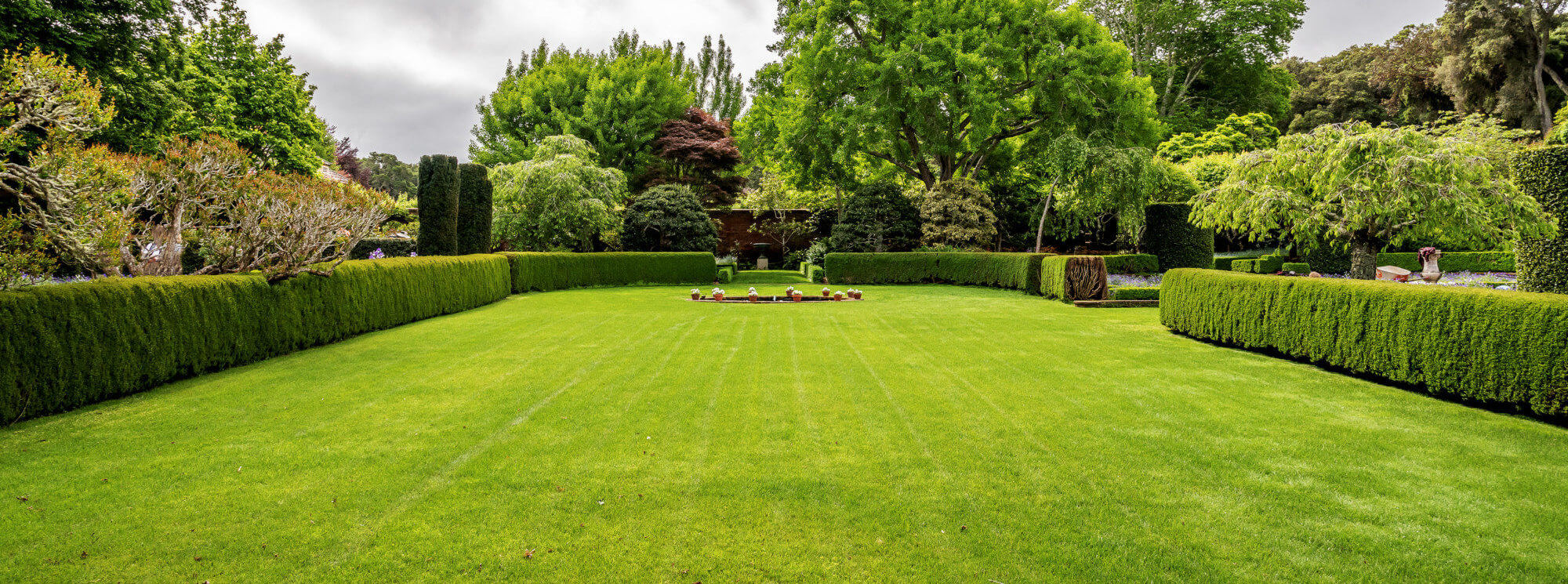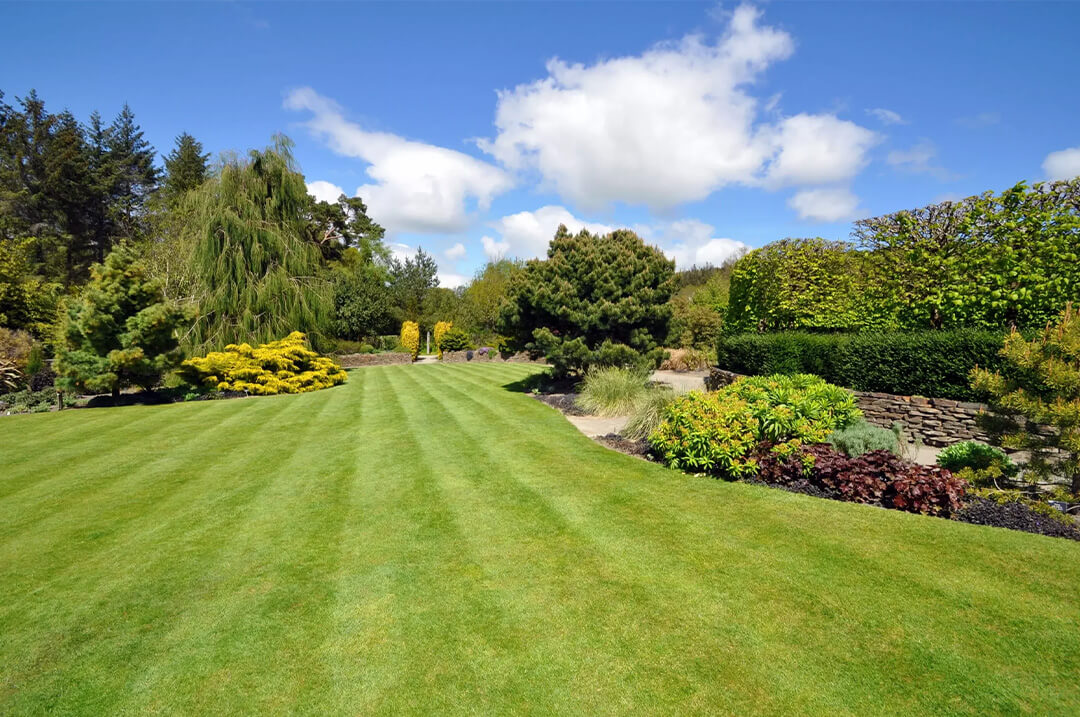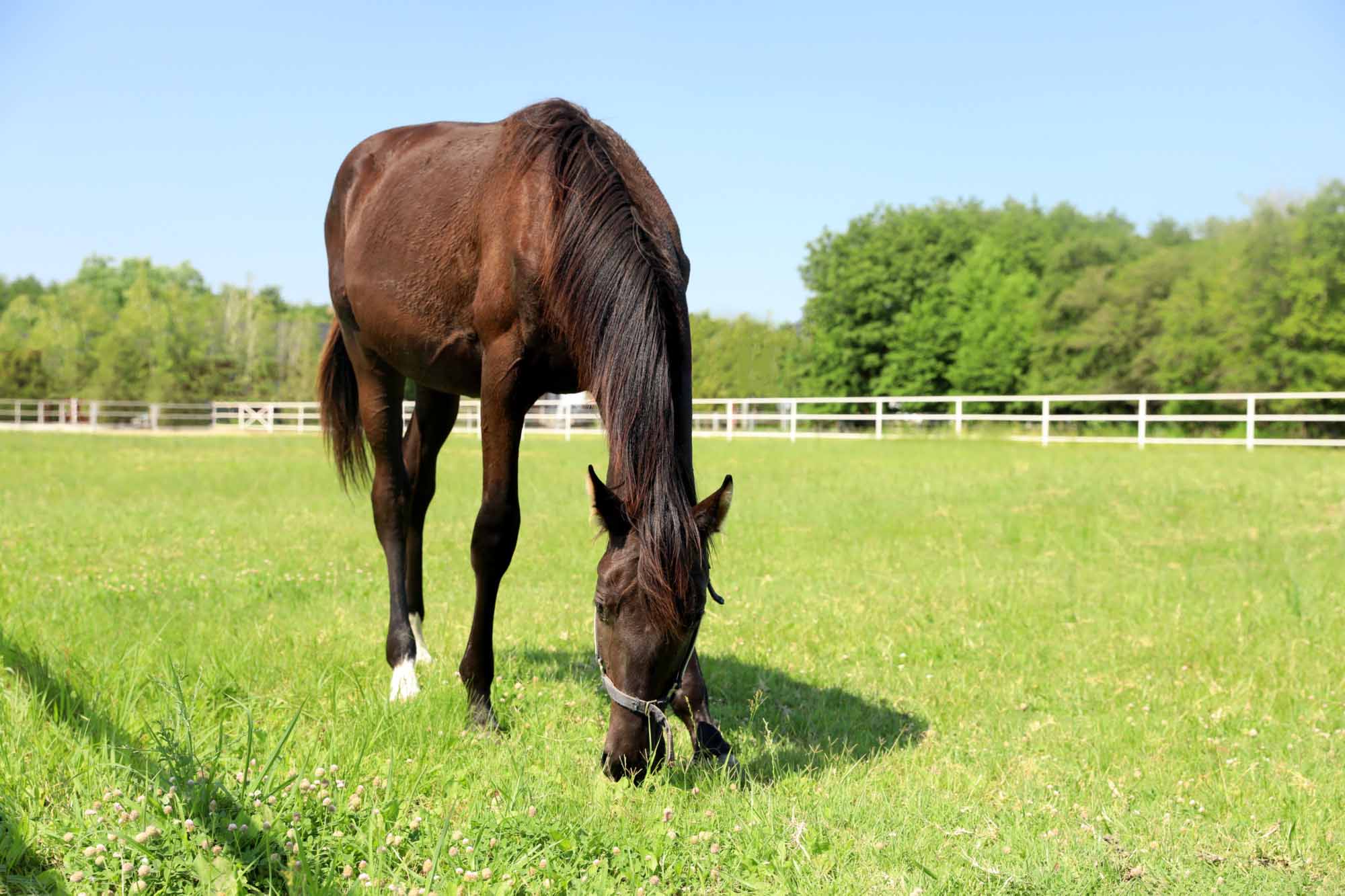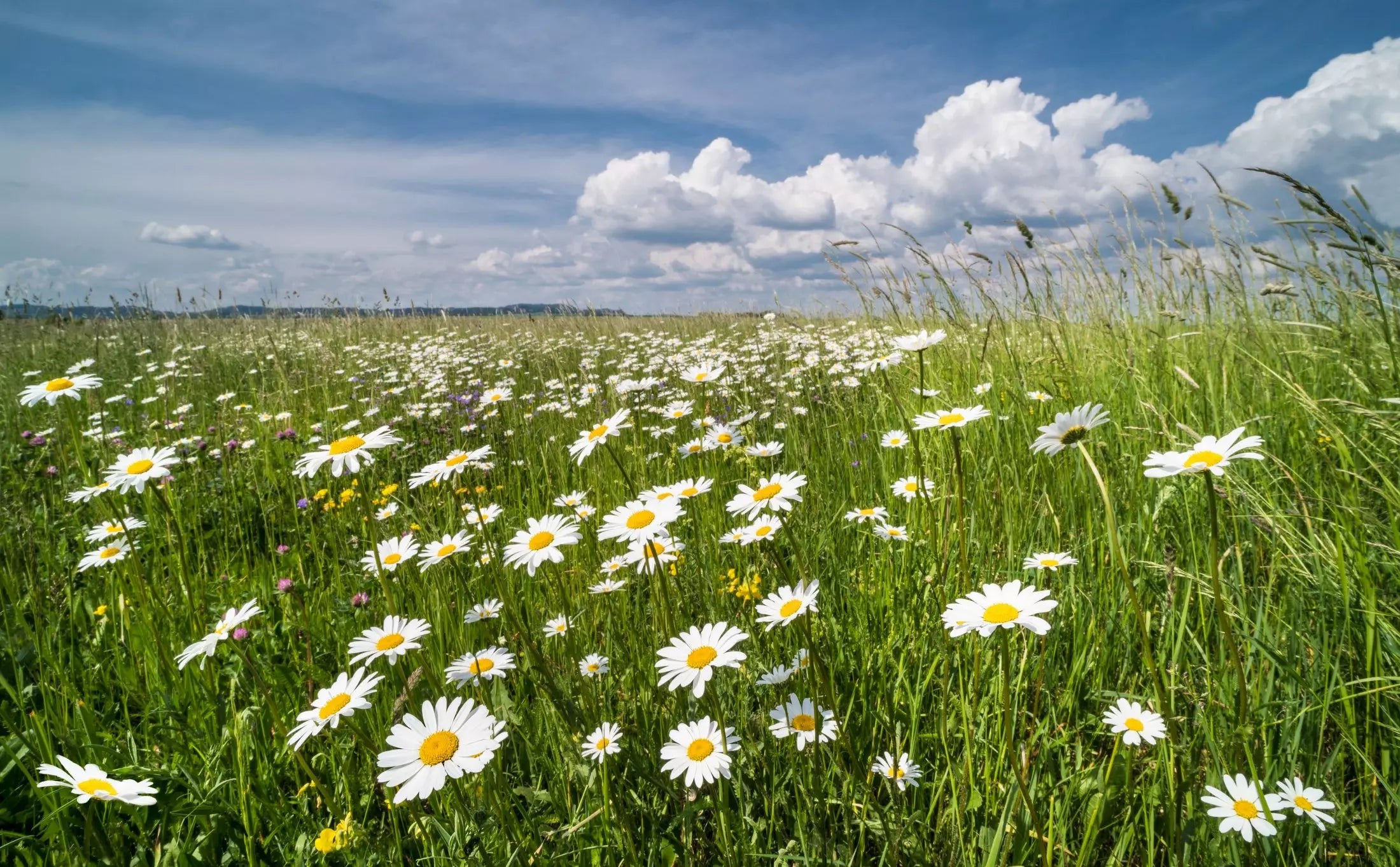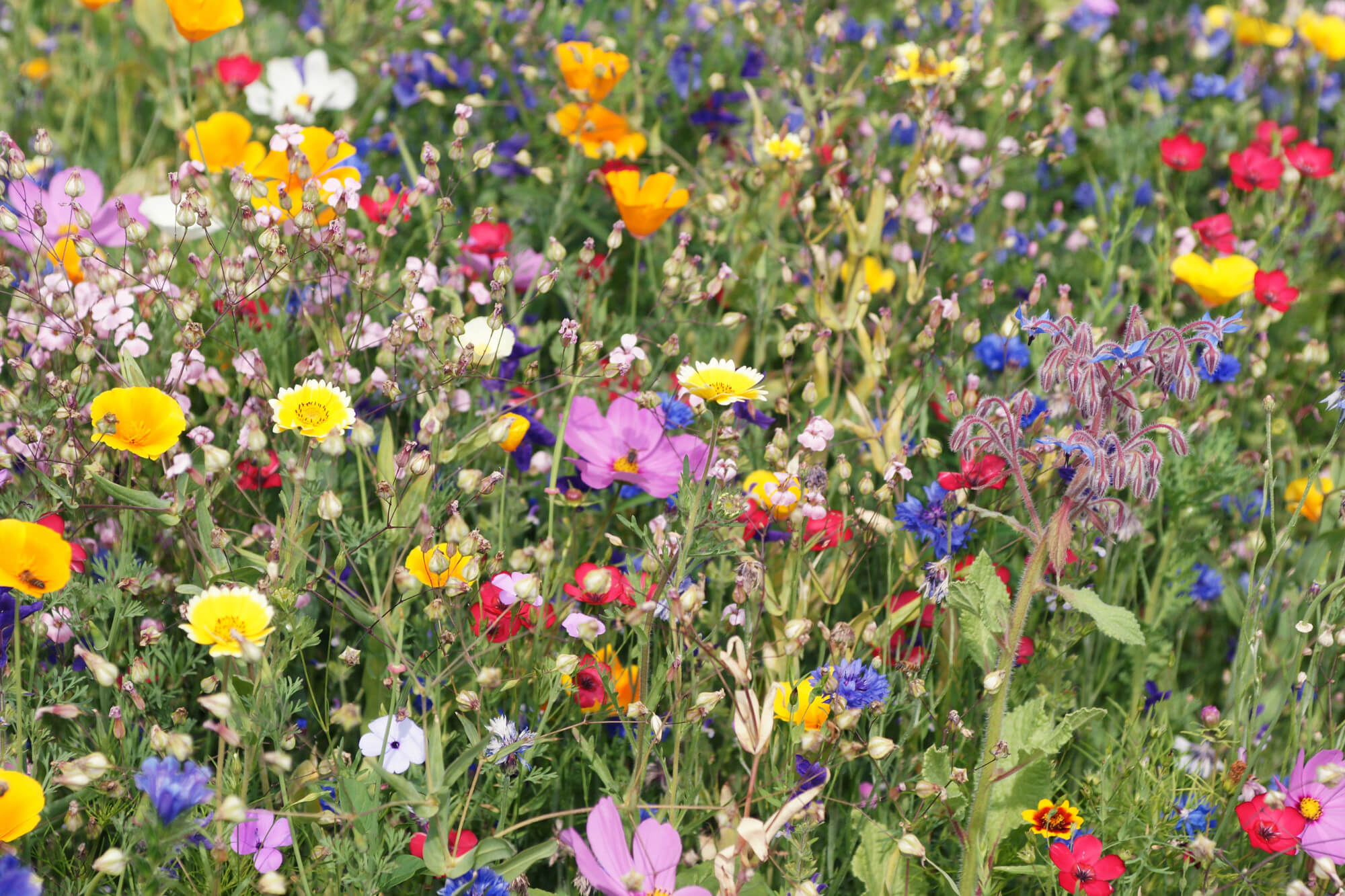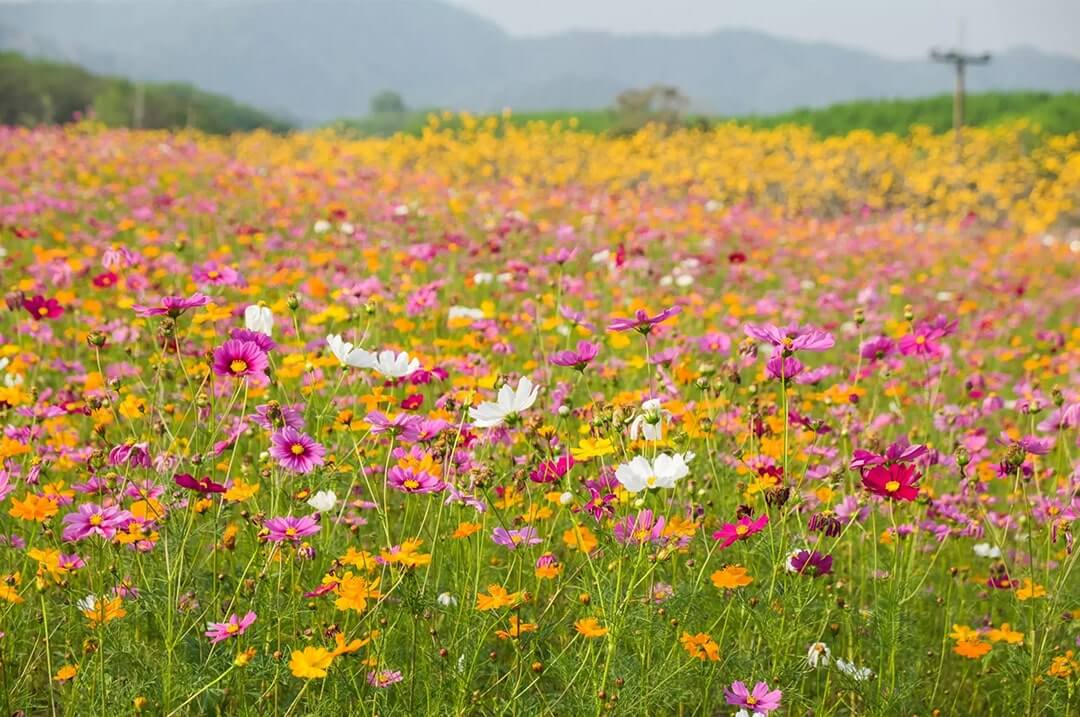Wildflower Seed for Biodiversity Net Gains
In every handful of wildflower seeds lies the potential to transform lifeless landscapes into thriving ecosystems. Biodiversity Net Gain, a principle rapidly gaining traction, is the strategic approach to enhancing the biodiversity value of a site beyond its pre-development state. While economic and urban developments often overshadow nature, BNG serves as a beacon, guiding our impact toward a symbiotic relationship with the environment. Biodiversity net gain from wildflowers is fast becoming a popular means of achieving this goal.
Understanding Biodiversity Net Gain is essential in grasping how individual actions can collectively affect the fabric of ecological networks. Its significance to environmental conservation is crucial; it ensures that when land is developed, there is a measurable improvement in natural habitats and ecological features — fostering resilience and diversity in local wildlife.
If you are looking for advice on Wildflower Seeds for Biodiversity Net Gain projects, please feel free to call us on 0800 0599918 or email contact@grassseedonline.co.uk.
Wildflower Seed for Biodiversity Net Gains
UK Native Grass & Wildflower Seed Mixtures
Blends of 80% certified grass seed and 20% UK native wildflower seed. Formulated to recreate a natual meadow with a carefully selected blend of grasses.
Frequently Asked Questions:
Biodiversity Net Gain (BNG) is a conservation principle and policy framework aimed at ensuring that development projects contribute positively to biodiversity. It operates under the concept that any impact on biodiversity from development activities should be outweighed by measures that enhance biodiversity, leading to a net positive outcome.
Example: Housing Development Project
Initial Assessment
- Baseline Survey:
Planning and Mitigation
- Avoidance and Minimization:
- On-site Enhancements:
Compensation and Offsetting
- Off-site Compensation:
The Biodiversity Metric is a standardized tool used in the UK to measure and quantify the biodiversity value of land. This metric helps developers, planners, and ecologists assess the impact of development projects on biodiversity and determine the necessary measures to achieve Biodiversity Net Gain (BNG).
Measuring a Biodiversity Net Gain (BNG) biodiversity metric requires specialized knowledge and expertise in ecology, habitat assessment, and biodiversity metrics. Typically, the following professionals are qualified to measure and assess BNG using the biodiversity metric:
- Ecologist
- Environmental Consultant
- Biodiversity Specialist
- Chartered Ecologist
- Licensed Surveyors
The basic requirement for Biodiversity Net Gain (BNG) in the UK is that development projects must achieve a minimum of a 10% net gain in biodiversity compared to the pre-development baseline. This requirement is part of the Environment Act 2021, which integrates BNG into the planning and development process to ensure that projects not only minimize harm to biodiversity but also contribute positively to it.
Yes, certain types of developments are exempt from the Biodiversity Net Gain (BNG) requirements as outlined in the Environment Act 2021. The exemptions are designed to ensure that the policy is practical and does not place undue burden on specific types of projects where implementing BNG might be particularly challenging or unnecessary. Here are the key exemptions:
Exemptions from BNG Requirements
- Householder Applications:
- Small-Scale Developments:
- Nationally Significant Infrastructure Projects (NSIPs):
- Urgent Crown Development and Defence Projects:
- Temporary Developments:
- Environmental Land Management Schemes:
Local Planning Authorities (LPAs): LPAs are responsible for incorporating BNG requirements into local planning policies and decisions. They ensure that development projects within their jurisdictions comply with national and local BNG policies.
What is Biodiversity Net Gain?
Biodiversity Net Gain (BNG) represents a transformative approach to development, integrating ecological improvement into construction projects. In essence, BNG ensures that when a development takes place, the natural world isn’t just protected—it’s enhanced. This environmental imperative dictates that habitats be left in a measurably better state than they were prior to development, with a statutory minimum 10% boost in biodiversity being mandatory for projects in England. From February 12, 2024, major developments were required to comply with these BNG mandates, and from April 2, 2024, smaller sites also came under this obligation. Biodiversity net gain from wildflowers is fast becoming a popular means of achieving this goal.
The goal of BNG is to leave a lasting positive legacy on the natural environment beyond the built structures, contributing to the conservation and enhancement of local ecosystems. The UK Government’s target for developers exemplifies the shifting tide towards integrating nature within the planning process, underscoring the role of natural environments in urban design and infrastructure decisions. Entities such as The Wildlife Trusts play a significant role in this evolution, advocating and implementing high standards for wildlife conservation within land management practices surrounding BNG.
Understanding the concept of Biodiversity Net Gain
The application of Biodiversity Net Gain in England introduces a legal framework whereby developers are impelled to ensure their projects achieve a minimum of a 10% increase in biodiversity. This twenty-to-thirty-year commitment translates into a concerted effort to restore, create, or enhance natural habitats—be it through the revitalization of wildlife corridors like rivers and streams, or the establishment of new hedgerows. BNG is not about merely maintaining the status quo of biodiversity; it seeks an overall improvement in ecological richness through planning processes.
At the heart of BNG lies the principle of the mitigation hierarchy—first, to avoid harm to ecosystems; then, to minimize impacts and, if necessary, compensate for them. This offers an actionable value to nature within the scope of development projects that cannot otherwise avoid impacting the environment. The implementation of BNG is calibrated through a biodiversity metric, enabling the quantification of ecological value both before and after a development, thereby ensuring gains in biodiversity are genuine and significant.
Importance of Biodiversity Net Gain for environmental conservation
Biodiversity Net Gain stands as a critical component in the fight for environmental conservation, presenting a robust vehicle for advancing ecological enhancements alongside urban and rural development. The BNG initiative knits together the expansion of green infrastructure and the imperative to protect and enrich our existing natural habitats, encapsulating an innovative awakening to the importance of ecological considerations in modern development.
By solidifying a measure for the quality of green spaces and wildlife habitats within the fabric of the planning and development process, BNG can lead to the creation of more robust, climate-resilient ecosystems. Moreover, it helps alleviate habitat loss, promoting the establishment of biodiversity actions that galvanize the ecological integrity of the natural environment. In the context of wildflowers, for example, BNG underscores the need for fostering genetic variability within wildflower species propagated in new habitats, thus enhancing the resilience and adaptability of these green spaces.
Biodiversity Net Gain is, therefore, more than a regulatory requirement. It functions as a catalyst for change, inspiring developers, conservationists, and communities alike to adopt proactive measures that ultimately lead to a healthier, more diverse natural world. It encourages partnerships for biodiversity, ensuring long-term commitment to nature conservation that transcends individual development projects, setting a new benchmark for sustainable growth in harmony with our planet’s rich tapestry of life.
Biodiversity Net Gain and the Planning Process
The integration of Biodiversity Net Gain (BNG) into the planning process marks a significant step towards sustainable development in England. With mandatory BNG requirements for major developments in place since February 2024, and extended to small sites from April 2024, including Nationally Significant Infrastructure Projects (NSIPs), the planning landscape has evolved to prioritize ecological enhancement. This regulatory shift enforces that key natural features such as biodiversity, and ecosystem services are not only protected but actively improved through development projects.
Under this framework, planning authorities and developers must work collaboratively to ensure that new developments deliver tangible benefits to the natural environment. The BNG influence on planning has meant that ecological considerations are no longer an afterthought but a foundational element of project design and execution. This proactive stance aims to safeguard nature against potential adverse impacts of urban expansion and infrastructure advancements, ensuring a positive legacy for future generations.
Incorporating Biodiversity Net Gain into planning applications
To embrace BNG within planning applications effectively, developers must present clear strategies for creating or enhancing wildlife habitats, rivers, streams, and hedgerows. A key facet of realizing BNG objectives is the integration of specially selected native wildflower mixtures, such as the Universal Wildflower Mixture from Grass Seed Online, into grassland areas earmarked for development. These carefully curated seed blends are designed to bolster local ecosystems, providing crucial support for a wide array of flora and fauna, from avid pollinators to birds, mammals, and insects.
When considering off-site BNG, developers must align with specific government criteria, ensuring that habitat improvements are not only impactful but also secured legally for a minimum period of 30 years. This commitment to long-term ecological stewardship is crucial for the allocation of biodiversity units, which are essential currency in the BNG economy, tying non-physical ecological assets to tangible and measurable development requisites.
Planning permission and obligations for Biodiversity Net Gain
Securing planning permission now carries an intrinsic obligation to adhere to BNG policies. Developers must demonstrate a capacity to deliver a project that not only meets human needs but also enhances the biodiversity of the site by a minimum of 10%. Successful planning applications are those that exhibit a thorough understanding of BNG metrics, showcasing the anticipated ecological enhancements and detailing the methods by which these will be achieved and sustained.
The planning process mandates developers to leave a diverse and thriving ecosystem in their wake—a testament to the shifting tides towards environmental responsibility within the development sector. Adhering to BNG requirements is more than regulatory compliance; it is a pledge to uphold the ecological integrity of our natural habitats.
Role of green infrastructure and green spaces in Biodiversity Net Gain
At the heart of BNG lies the principle of leveraging green infrastructure and green spaces to achieve ecological betterment. These elements form an integral part of the urban tapestry, facilitating the creation of sustainable and resilient landscapes. Implementing BNG often involves sowing various amenity areas — from communal gardens to city parks — with specialized seed mixes that promote the proliferation of native wildflower species.
These biodiversity-rich green spaces act as vital conduits for nature within urban environments, supporting pollinators, enhancing the visual appeal, and contributing to the wellbeing of inhabitants. By integrating green roofs, using square meters of otherwise unused rooftop space, or optimizing green belts around residential developments, BNG becomes a lived experience—a manifestation of planning and nature in harmony.
Wildflower Seeds and Biodiversity Net Gain
Establishing native wildflowers is an increasingly recognized strategy in achieving Biodiversity Net Gain (BNG), a central component in the UK’s approach to sustainable development and land management. The introduction of wildflower habitats is not only a boost to local flora and fauna but also serves as a practical, cost-effective measure for developers and land managers to meet their BNG obligations.
By integrating wildflower seeds into green spaces, developers can create vibrant, biodiverse landscapes that inherently support BNG’s fundamental goal: to leave the natural environment in a measurably better state than before. British wildflower seeds are especially suited for BNG projects as they are already adapted to the nation’s particular climate and soil conditions, which translates to higher chances of successful growth, lower maintenance, and sustained ecological value.
Grass Seed Online and other providers offer an array of wildflower seed mixes that cater to a variety of habitats. Their inventory includes solutions designed to thrive in specific conditions, whether it be woodlands, wetlands, or urban settings. Moreover, they stand ready to concoct bespoke seed mixtures, balancing ecological science with creative landscaping to fulfill the unique BNG requirements of each new development project.
The role of wildflower seeds in enhancing biodiversity
Wildflowers are not just a visual delight; they are cornerstones of thriving ecosystems, offering critical resources for wildlife such as birds, insects, and small mammals. Incorporating British native wildflowers into the landscape is one of the most effective ways to generate rich, diverse habitats as part of BNG initiatives. The introduction of correctly selected wildflower seeds can transform a monocultural green space into a multifaceted ecosystem, accommodating a broad range of plant and animal species.
These wildflower havens benefit the soil by preventing erosion, enriching it with organic matter, and promoting a healthy below-ground biotic community. Furthermore, wildflower areas are known to host upward of 60 species per square meter, proving their unmatched capacity to foster biodiversity. Such environmental contributions highlight the cost-effectiveness and low-maintenance attributes of wildflowers, which only require limited intervention like an annual cut in autumn, to thrive.
Creating wildlife habitats with wildflower seeds
Wildflower meadows go beyond aesthetics; they provide tangible ecological benefits such as flood mitigation and carbon storage. Developers seeking to address BNG goals can leverage wildflower grasslands as a viable alternative to more labor-intensive and costly landscaping methods. To establish wildflower habitats effectively, it is imperative to consider the design, obtain experienced ecological advice, and choose the appropriate seed mix tailored to local conditions.
In addition to enhancing the environment, establishing wildflower habitats can also be a shrewd investment. Prospective residents and businesses increasingly value and seek out developments with a strong green profile, potentially leading to increased demand and financial returns. Wildflower seeds can therefore be a key ingredient in achieving measurable BNG, enriching wildlife habitats, and ultimately bolstering biodiversity across various sites.
Benefits of wildflower habitats for pollinators and insects
Wildflower habitats serve a critical function for pollinators and insects. Such environments offer abundant foraging opportunities and shelter, crucial for maintaining healthy populations of bees, butterflies, beetles, and other invertebrates. The diverse and colorful blooms of wildflowers attract a variety of pollinators, enhancing pollination processes which are vital for both natural ecosystems and agricultural productivity.
By establishing wildflower grasslands, we create vibrant corridors for wildlife, which are especially important within fragmented landscapes common in urbanized areas. In doing so, we not only aid in the survival of numerous pollinator species but also encourage their movement and genetic diversity. As a result, wildflower habitats become natural assets that underpin ecological resilience and contribute to the overarching objectives of Biodiversity Net Gain.
Biodiversity Metrics and Measuring Biodiversity Net Gain
Biodiversity Metrics and Measuring Biodiversity Net Gain
The UK government’s biodiversity metric is a critical tool that quantifies an area’s wildlife value. Developers utilize this tool to evaluate biodiversity within project sites, ensuring adherence to Biodiversity Net Gain (BNG) policies. This key metric takes into account habitat features to compute a biodiversity unit, essential for gauging both present and projected site value in terms of biodiversity.
Under new regulations, there is an obligatory baseline: a minimum 10% increase in biodiversity value must be attained. This mandate is part of the BNG plan integral to the planning process of development projects. The National Farmers’ Union (NFU) has been actively involved in reviewing and consulting on the statutory biodiversity metric. With the most recent iteration published by the Department for Environment, Food and Rural Affairs (Defra), the application of this metric has become a mandatory component of BNG.
Farmers and developers alike can leverage the biodiversity metric to generate BNG units during project assessments or planning. While ecological guidance is advised for effective use, the metric’s role is set within the mitigation hierarchy framework. This ensures that efforts are primarily focused on averting and reducing biodiversity losses on-site, turning to the purchase of offsets only as a final measure after all other options have been exhausted.
Habitat Loss and Biodiversity Conservation
The stark reality of habitat destruction presents a profound challenge to the fabric of the UK’s natural environment. The alarming statistic that 97% of wildflower meadows have been eradicated since the 1930s paints a vivid picture of the scale of habitat loss. Such a dramatic decrease underlines the urgent need for initiatives that not only halt the decline but also actively contribute to biodiversity conservation.
When developers engage in land conversion for residential or commercial purposes, the ensuing habitat loss can, in part, be mitigated through a unique element of the planning obligation – the purchase of biodiversity units. These units are intricately calculated based on the habitat’s size, its distinctiveness, and the condition it’s in, with a particular emphasis on the presence of indicator plants that signal a healthy ecosystem.
Understanding Habitat Loss and Its Impact on Biodiversity
Habitat loss encompasses much more than a mere reduction in green spaces; it strikes at the heart of biodiversity, leading to the decline of species and the disruption of ecosystems. To counter this, the UK has pledged to sow wildflower meadows across 1,000 hectares over the coming decade, a testament to the country’s commitment to reinstate the rich tapestry of its natural habitat. While such measures are commendable, the focus on cultivating sites specifically for biodiversity must be balanced with the recognition that on-site actions alone are not enough. Often, when developments concentrate solely on site-specific plans, large-scale habitat connectivity suffers, leading to fragmented pockets of nature that fail to support sustainable ecosystems.
Importance of Habitat Management in Biodiversity Net Gain
Efficient habitat management forms the linchpin ofBiodiversity Net Gain (BNG), a strategic approach that integrates the enhancement of wildlife habitats into development projects. The onus is on ensuring that new developments, rather than merely minimally complying with environmental regulations, actively engage in enriching the surrounding natural landscape.
Key habitat management practices include:
- Creation and preservation of diverse wildlife habitats, such as wildflower habitats.
- Protection and enhancement of water bodies like rivers and streams.
- Restoration and reinforcement of traditional landscape features like hedgerows.
Developers adopt strategies that stitch the natural world back together. A systematic planting of wildflower seeds, for example, not only beautifies but also serves as a crucial butterfly habitat, inviting pollinators that are essential for a healthy ecosystem. Moreover, the integration of green infrastructure – such as green roofs – within urban settings ensures that nature finds its place even in the heart of residential developments. The cultivation of meaningful partnerships with local communities amplifies these efforts, fostering a sense of stewardship and ensuring the longevity of biodiversity actions.
In conclusion, the multifaceted approach to habitat management within the BNG context ensures that developments leave a lasting, positive impact on the natural environment, securing the legacy of biodiversity for generations to come.
Habitat Banking and Biodiversity Offsetting
Habitat banking is an innovative approach designed to preemptively counterbalance the effects of development on biodiversity. As urban expansion and infrastructure projects continue, habitat banking provides a strategic platform to organize the creation of new natural habitats. These are established ahead of time, ensuring that developers have access to a range of biodiversity credits, which denote the area of habitat created or restored.
By integrating habitat banking into the early planning stages, developers can ensure a net gain in biodiversity, ultimately leading to cooperative efforts between conservation groups and the development sector. The co-benefits of this method are vast, facilitating ecosystem resilience, supporting wildlife populations, and enhancing societal well-being through the preservation and augmentation of nature’s services.
Understanding Habitat Banking as a Method for Biodiversity Offsetting
Habitat banking for Biodiversity Net Gain involves preemptive cultivation of ecosystems away from development sites. This proactive measure not only compensates for any potential environmental impact but does so before the disruption occurs. It operates under a calculated system of biodiversity credits or units – representations of the ecological value created, conserved, or enhanced through habitat banking.
The Wildlife Trusts often take the leading role in delivering these high-quality habitats, promising not just the mandatory 30-year maintenance but a perennial commitment to these restored landscapes. BNG projects aim for a measurable 10% increase in biodiversity and, although ideally achieved on-site, habitat banking provides a practical, scalable solution when on-site conservation isn’t possible.
Role of Wildflower Seeds in Creating Habitat Features for Biodiversity Offsetting
In the tapestry of biodiversity offsetting, wildflowers emerge as elemental threads. British wildflower seeds, intrinsic to the establishment of BNG projects, play a pivotal role in creating vibrant habitats that serve as the foundation for a multitude of species. Their integral part in ecosystems – from nourishing pollinators to enhancing soil health – cannot be overstated.
Selecting local wildflower varieties is key, as they harmonize seamlessly with the existing climate and soil, promoting successful and enduring growth. When wildflower meadows are sown, they become self-sustaining tapestries that not only beautify landscapes but also provide a thriving environment for wildlife.
These meadows, recognized as asset-rich features, contribute to BNG credits through their ability to bolster biodiversity, control flooding, and sequester carbon. Furthermore, these habitats support the convergent goals of different conservation incentives, enabling the combination, or ‘stacking’, of benefits and payments geared toward habitat and species conservation. Wildflower meadows thus encapsulate a cost-effective and ecologically beneficial solution to meet BNG requirements, championing a sustainable symbiosis between human activity and the natural world.
The detailed criteria for Biodiversity Net Gains and any exemptions can vary, and further guidance is often provided by local planning authorities or specific regulatory bodies. It is essential for developers to consult the latest regulations and seek advice from planning authorities to determine if their project qualifies for an exemption.




